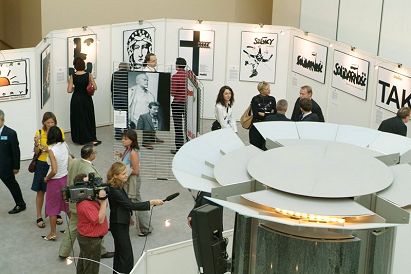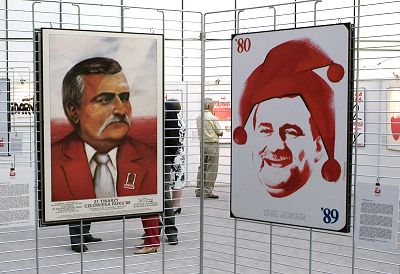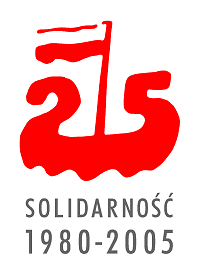
Wieslaw Grzegorczyk
The poster also serves as a logo for the anniversary
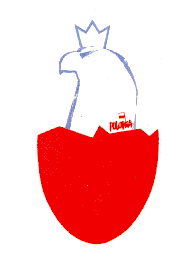
Tomasz Bengsz
Red and white are the colors of the polish national flag. During the communist time, the heraldic polish eagle was robbed of it's crown, which was restored in 1990.
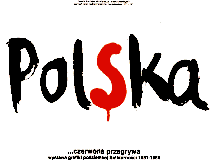
Jan Bokiewicz
an exhibition of graphics in support of Solidarnosc 1981 -1989, at the Zacheta Gallery in Warsaw, the longtime home of the Warsaw International Poster Biennial.
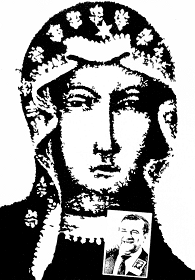
Jakub Erol
The Holy Virgin of Czestochowa, the patron saint of Poland
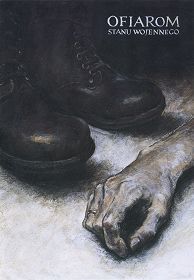
Wieslaw Grzegorczyk
"To the victims of martial law"
When the political situation became a threat to the communist governement, General Jaruszelski declared a State of War on December 13, 1981 which lasted until July 22, 1983. Lech Walesa was imprisoned, and many people were killed.
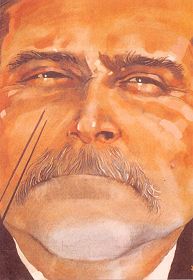
Grzegorz Marszalek
The two slashes on the cheek of Walesa are the attributes of the Holy Virgin of Czestochowa
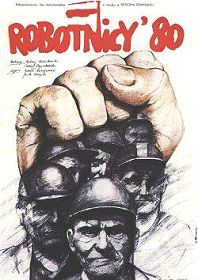
Andrzej Pagowski
"The workers ' 80"
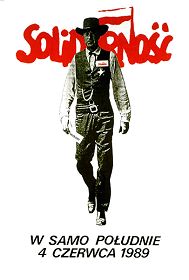
Tomasz Sarnecki
with a picture of Garry Cooper as sheriff from the movie High Noon. The date, June 4, 1989, refers to Solidarnosc's victory in the first semi-free parliamentary elections in post-war Poland.
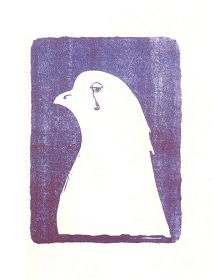
Franciszek Starowieyski
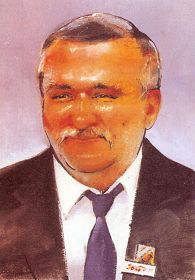
Waldemar Swierzy
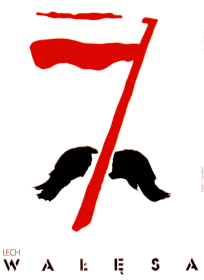
Krzysztof Tyczkowski
Anna Walentynowicz, called the Mother Courage of the Gdansk Shipyard (then the Lenin Shipyard), was immortalized as the main character in Hanna Krall's play Relations (Pol. Relacje), put on stage of the National Theatre in Warsaw in 1981. Walentynowicz belongs to the most important personalities connected with the beginnings of SOLIDARITY. She had been working in the shipyard for 30 years, but in August 1980 she was to be disciplinary dismissed from work for political reasons - for she had always been telling the truth. During the strike the shipyard workers demanded that Walentynowicz be permitted to return to work.
In her memories from August 1980 she wrote :
"It was on 14th August before the first shift. We were hoping that after a few hours, maybe after one day at most, the manager would withdraw the dismissal and all things would return back to normal. People were gathering in front of the posters, they were reading the leaflets that were being handed out, but there was nothing about the strike was beginning. Indignation at the management was increasing, the need to manifest dissent together was growing in people's minds, but fear was still predominant . "
Walentynowicz's poster reminiscences are an occasion to remind that "in August 1980 in the central canteen of the Lenin Shipyard in Gdansk an exhibition of photograms and 33 posters from the National Theatre, which was founded in 1765 by the Polish king Stanislaw II August Poniatowski, was taking place. The exhibition was organized on behalf of the National Theatre by Wladyslaw Serwatowski, press and advertising expert. After leaving the Gdansk Shipyard the exhibition will be displayed in the Maritime Culture House (Pol. Morski Dom Kultury) in the Gdansk New Port and also in other cultural institutions of the Gdansk coastal region." This is the way a newspaper of the shipbuilding industry, the Shipyard Worker's Voice (Pol. Glos Stoczniowca), issue no. 1641 from 8th August 1980, informed about the exhibition. Together with the article there appeared a black and white photograph with posters by Henryk Tomaszewski, Jan Lenica, Marcin Mroszczak and Jerzy Czerniawski.
The short note that otherwise would only have documentary character becomes important now, as the exhibition in Brussels is part of the international celebrations of SOLIDARITY's 25th anniversary. To further stress the importance of Polish poster art I looked up in the archives an old note with a photograph sent to me by an anonymous Gdansk Shipyard worker, who wrote that during the August strike in the shipyard he had remembered the poster exhibition from the National Theatre. To emphasize that he was satisfied with the exhibition he added that he was an amateur weaver and that in the pauses between the political negotiations in the shipyard he had created a tapestry depicting one of the posters from the exhibition in the shipyard's canteen. He enclosed a coloured photograph of his work inspired by Jan Lenica's poster to the play Two Theatres (Pol. Dwa Teatry) by Jerzy Szaniawski. The creator of that tapestry still remains anonymous.
The exposition in Brussels shall correspond to the times when the posters were created. This is why I had originally planned to place two huge cargo containers at the seat of the European Parliament and at the Université Libre de Bruxelles. The SOLIDARITY posters published in the times of censorship (1980-1989) were to be exhibited inside the first, closed container, in the second and open one - the posters connected with SOLIDARITY, published outside Poland or in Poland after 1990. A thick ship rope was to mark the exhibition space and a port anchor was to remind about merits of the Gdansk Shipyard. But when it turned out that the containers do not fit into the closed space that had been planned for the exhibition, I decided to exchange them for two rough iron gates. One of them will be closed, so that it is a metaphor of the strike in August 1980, when shipyard workers were locked in the shipyard. The other - open - will be symbolizing freedom. In addition, the ship rope will form the word "SOLIDARNOSC".
The art of preparing an exhibition is sometimes the art of being able to abandon certain ideas and to introduce unexpected changes. To convey the atmosphere of August 1980 and to bring closer the heroes of the Gdansk Shipyard, several front pages of renowned newspapers and magazines from Brussels, Hamburg, London, New York, Paris and Zuerich have also been included into the exhibition. What is more, on exhibition are also the remarkable photographs that were made in August 1980 by Erazm Ciolek and Giovanni Giovannetti.
To conclude I need to add that a perfect poster always communicates three levels of experience: Information, illustration and inspiration. In my opinion, the historic and artistic posters connected with SOLIDARITY do fulfil all the criteria of perfection.
25 YEARS OF SOLIDARITY POSTERS
"In collective memory the emergence of SOLIDARITY can be described by the following formula: August 1980 = June 1956 + March 1968 + December 1970 + June 1976," wrote the young English historian Timothy Garton Ash (born 1955) in his book The Polish Revolution: Solidarity 1980-82 (London: Jonathan Cape Ltd., 1983), for which the British Society of Authors presented him with the Sommerset Maugham Award in 1984. Earlier the architect Czeslaw Bielecki had come to a similar conclusion designing a poster which he enriched with the experiences of the 1944 Warsaw Uprising.
The proper name "SOLIDARITY" is primarily associated with the strikes in the Gdansk Shipyard because of their 25th anniversary, but its history is more complex. It was already mentioned in March 1883 in the name Polish Party SOLIDARITY (Pol. Polska Partia SOLIDARNOSC) that had emerged from a split within the so-called "First Proletariat", a revolutionary workers' party.
The term solidarity exists in law sciences (as the obligation to mutual responsibility and assistance), psychology (as the tendency to act in a similar way to other members of a group) and sociology (where it describes cooperation and co-responsibility when the group is being threatened from outside).
In August 1980 in the Gdansk Shipyard the term solidarity was used as a key to victory in the public speeches of Andrzej Gwiazda (the co-founder of the Free Trade Unions of the [Polish] Coast [Pol. Wolne Zwiazki Zawodowe Wybrzeza]) and of Lech Walesa.
SOLIDARITY as a name appeared in the title of the Strike Information Bulletin Solidarity, which was edited by Konrad Bielinski, an activist of the Committee for the Defence of Workers , and which was printed in the "Free Gdansk Printing Works" (Pol. "Wolna Drukarnia Gdanska"). The first issue appeared in 20,000 copies in the Gdansk Shipyard on 23rd August 1980.
The first posters with the SOLIDARNOSC heading (the Polish word for "SOLIDARITY") appeared during the last week of August 1980, and on 30th August the shipyard workers were already wearing T-shirts with SOLIDARNOSC printed on them, a white and red flag above the letter "N", all in a red and disobedient font.
The examination of Solidarity posters and qualifying them for an exhibition brings about a few remarks and conclusions that have not yet been explicitly.
The purpose of this introduction is to explain the choices and selections made by the exhibition's curator to the visitors of the Brussels exhibition.
1. In the history of SOLIDARITY posters I distinguish four distinct periods:
2. I classify the quality of SOLIDARITY posters according to clear criteria of their publication time.
I intentionally included two more works into the exhibition, as they enrich the poster collection on display, even though they do not quite fulfil the qualification criteria mentioned above.
Wladyslaw Serwatowski
Translated by Piotr Kaczmarek
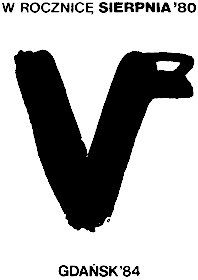
Jan Bokiewicz
A victory sign and the Solidarnosc flag for the 4th Anniversary, August ' 80 - Gdansk ' 84
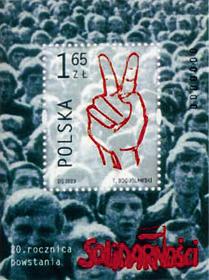
Tomasz Boguslawski
Postage stamp for the 20th anniversary of the origin of Solidarnosc.
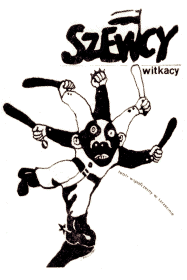
Andrzej Czeczot
for Witkacy's play "The shoemakers".
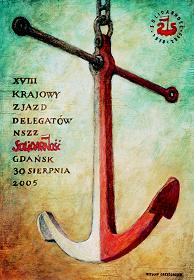
Wieslaw Grzegorczyk
"18. National Congress of the NSZZ Solidarnosc Delegates in Gdansk, August 30, 2005".
The anchor, a universal symbol of hope, has a special meaning in Poland as Kotwica, the symbol used in WW2 by the polish underground army, and later on also by Solidarnosc. It also recalls the origins of Solidarnosc in the shipyards of Gdansk.
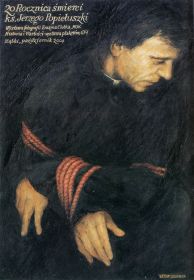
Wieslaw Grzegorczyk
"The 20th anniversary of Rev. Jerzy Popieluszko's death"
The outspoken priest and Solidarnosc supporter was murdered by the Security Forces in 1984 when he could not be intimidated or silenced.
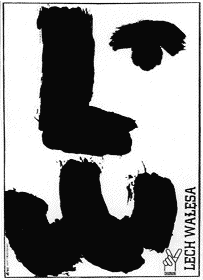
Piotr Mlodozeniec
An election poster for Lech Walesa, interpreting his portrait and initials in a masterful way as a polish anchor.
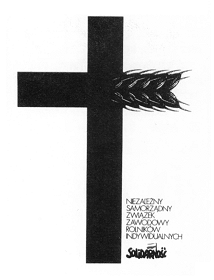
Eugeniusz Stankiewicz - Get "Independent Self-Governing Trade Union of Independent Farmers Solidarity"
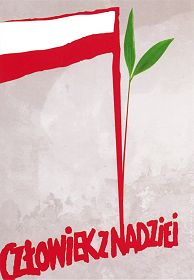
Leszek Szurkowski
"The man of hope" is an allusion to the famous Wajda movies "The Man of Iron" and the "The Man of Marble"
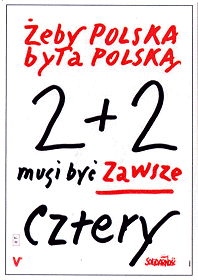
Henryk Tomaszewski
"Zeby Polska byla Polska" ("Let Poland be Poland!") is the title of a song that became the unofficial anthem of Solidarnosc. In this 1989 election poster, Tomaszewski goes a step further, pleading "If Poland has to be Poland, 2+2 must ALWAYS equal four".
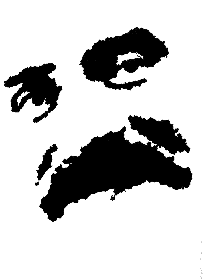
Mieczyslaw Wasilewski
